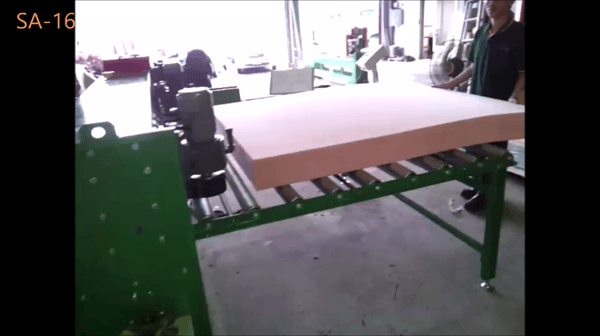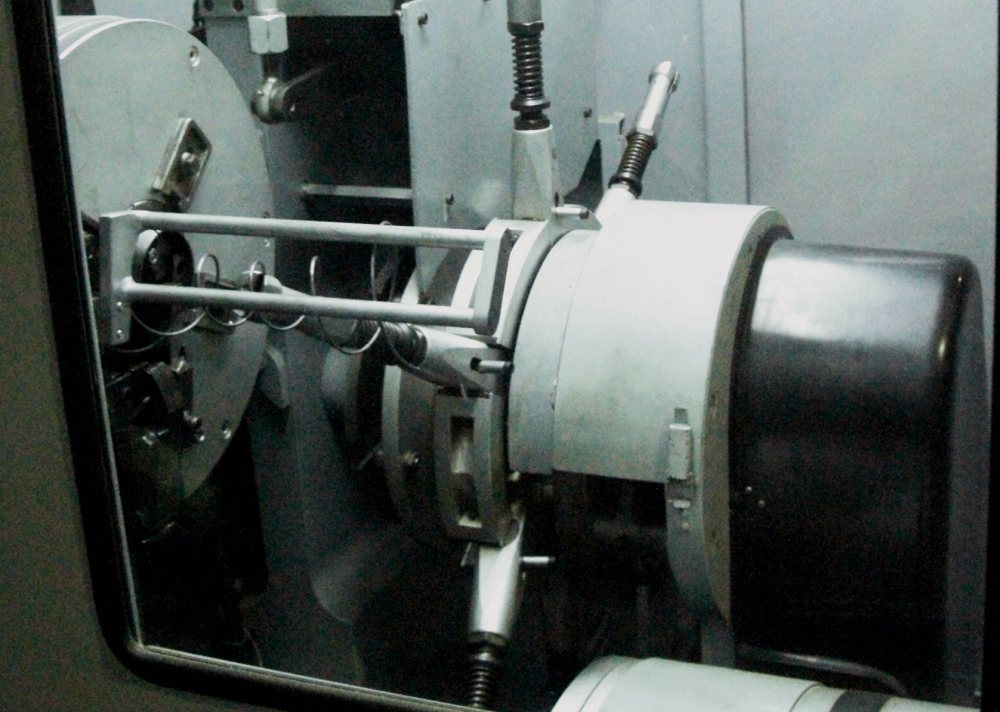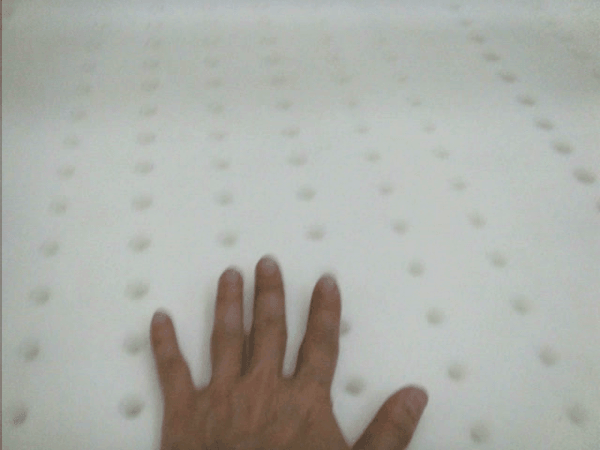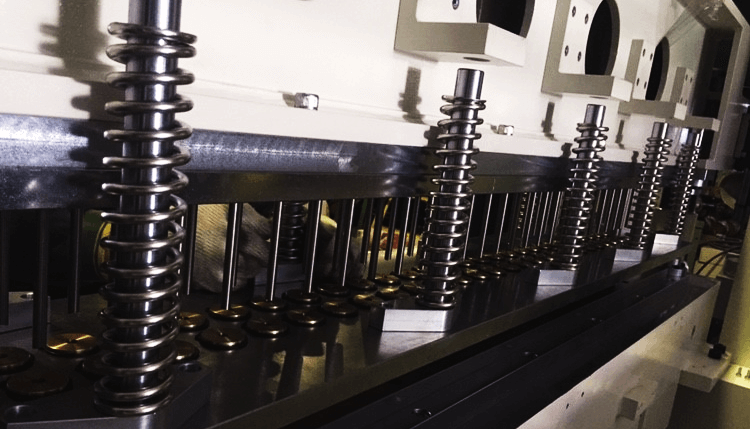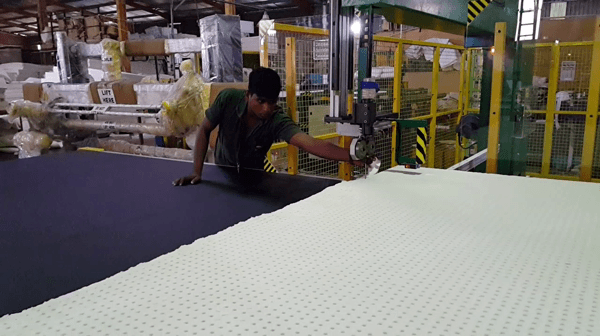How are mattresses made? The answer differs around the world. In this article, Sunkist will tell you all about mattress-making from the machine manufacturer’s perspective.
To do so, let’s split up mattresses into the three major types we covered here:
Polyfoam Mattresses
Polyfoam refers to standard-grade, non-viscoelastic polyurethane foam. There are two types of polyfoam mattresses: pure foam and innerspring.
Pure foam mattresses are made only of foam and cloth, and are the easiest to manufacture by far. The steps are as follows:
- Make or purchase a block of flexible foam.
- Cut foam into thick pieces on a horizontal cutting machine.
- Insert foam piece into cloth wrap.
And that’s it! For many places in the world, a slab of flexible foam is comfortable bedding on its own. Manufacturers, then, only need a simple set-up of a batch foaming machine, a cutting machine, and a mattress-stuffing machine.
Innerspring mattresses are a little more complicated, though they can still be the cheapest to manufacture by material. Metal wire is coiled and interlocked to establish a frame, on which insulation and bedding are tacked and sewn. These are your traditional bouncy mattresses found in most corners of the world.
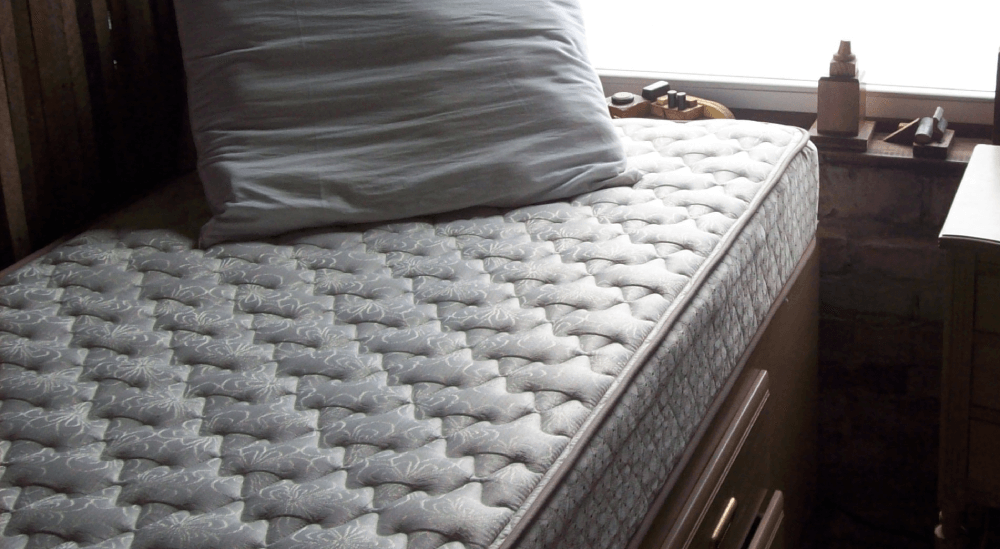
Of course, there’s a science to the wirework. Here’s a generalized breakdown:
- Bonnell/Open Coils: oldest coil style, hourglass-shaped, serviceable
- Offset Coils: improved Bonnell coils, better conforms to body contours
- Continuous Coils: cheapest to manufacture, stiffest
- Pocketed Coils: best “point elasticity” to conform to body contours
(To learn more, Saatva is a premium mattress manufacturer that offers a Definitive Innerspring Mattress Guide.)
Memory Foam Mattresses
The foaming chemistry of viscoelastic is the same as standard flexible PU (learn more about that here), differing in formulation at the foaming technician’s discretion. In terms of construction, memory foam is stacked on top of other material—often standard polyfoam, sometimes a layer of cooling gel. In many ways, memory foam mattresses are not very different from traditional innerspring mattresses.
One major difference for manufacturers to consider is in storage and packaging. Foam goods are often compressed during transit to save space, but innerspring mattresses will suffer more during compression. Mattress-in-a-box is pretty trendy in the world of bedding, and while pocketed spring mattresses are compressible, people have complained about loss of product quality.
Memory foam mattress manufacturers often use not only cutting machines, but also hole punching machines. This increases airflow to the heat retention–prone viscoelastic. Eco-conscious plants also plan for scrap-recycling after the conversion process.
Latex Mattresses
Latex can be made of both natural and synthetic chemicals. It can be heavy, so you often see latex mattress toppers instead of full mattresses. It is also more expensive, making latex mattresses more of a luxury segment.
Similar to viscoelastic, latex mattresses typically have small holes all over it. The purpose for these holes are different, however. Latex has high thermal resistance, so spikes are built into the molds themselves in order to more effectively conduct heat and vulcanize the latex.
A couple of other terms to know…
- Flange Machine: designed to sew together mattress layers by the edge, which can then be tucked into an innerspring frame.
- Tape Edge Machine: designed to seal the edges of a mattress as the last step before completing construction.
So how are mattresses made? On some level, the process looks pretty much the same across the board: stack together a mix of materials to maximize structural strength while retaining comfort. Are you a mattress manufacturer curious about expanding your product portfolio? Contact a Sunkist expert for a consultation today.
